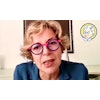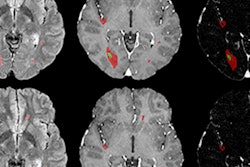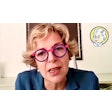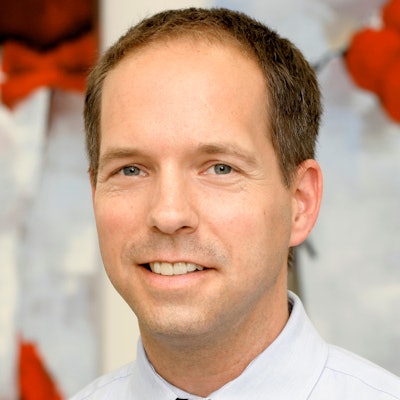
Radiologists can only ensure their future success if they work together, learn more about artificial intelligence (AI) and radiomics, and obtain reliable data to validate, standardize, and certify potential AI applications. That's the view of Prof. Gerald Antoch, president of the German Röntgen Society.
Antoch, who is director of diagnostic and interventional radiology at University Hospital Düsseldorf, took out his crystal ball and made some predictions for the decade ahead in a recent interview with the British Institute of Radiology (BIR).
BIR: What do you think will be the single most positive development in the world of imaging in the next 10 years?
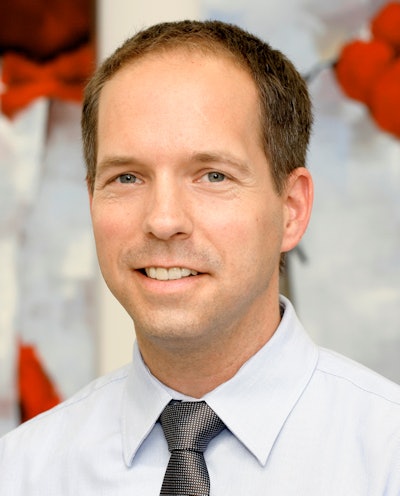 We need to pool our interests, Prof. Gerald Antoch believes.
We need to pool our interests, Prof. Gerald Antoch believes.Antoch: Since 1895, when Wilhelm Conrad Röntgen discovered x-rays, radiology has been the source for many groundbreaking inventions, driving progress in the medical field. Currently we are seeing a rapid development in the medical profession in general and of radiology specifically through digitalization, which will further accelerate throughout the next 10 years. Artificial intelligence, machine learning, and neuronal networks are not just buzzwords. Radiologists worldwide already include them in their everyday work. In the near future, they will develop new imaging solutions together with physicists, software engineers, and data scientists.
Take radiomics, for example: the analysis of quantitative image characteristics. In a few years' time, image information invisible to the human eye will lead to additional findings through radiomic data analysis. By correlating radiological data with other data, e.g., patient history, pathology, or genetics, we will gain a new instrument to detect health problems substantially earlier and more specifically.
AI will help create personalized precision medicine worldwide, delivering individual treatment options. AI will be able to determine noninvasively whether a patient will profit from a certain therapy, thus adding information on patient prognosis. Radiologists worldwide need to understand these potential fields of application of AI and are strongly encouraged to help shape the future of radiology and medicine by becoming the driving force to develop and implement AI in the clinical routine.
What is the biggest obstacle to progress in imaging around the world and in your country, in particular?
We already hear swan songs on the radiological profession -- prophecies predicting the elimination of radiology due to digitalization. Indeed, digitalization is one of our biggest challenges lying ahead. AI and a more comprehensive use of medical data will change all our everyday jobs, in radiology and all health professions. Will new technologies replace our work? No, but they will change the way we work substantially. Digital technological development will facilitate many routine tasks, leaving the interpretational authority with the professionals. Based on a constantly increasing workload, radiologists may even have to rely on such a development that may culminate in a digital sort-out of nonpathologic imaging studies, relieving radiologists of imaging studies not requiring highly qualified radiological expertise. The biggest obstacle to this development is a lack of validated, reliable data.
For digitalization, and especially for the application of AI, validated radiological and nonradiological data are key to train algorithms. Today, there are two different worlds: web developers on one side, who have the code and the money, and radiologists and other hospital professionals on the other with the data. We will need to work together and learn from each other to produce the best outcome for our patients.
Teamwork directly relates to this challenge. Despite all transformations in job descriptions and upcoming new specializations, we can only keep the quality level and effectiveness at the highest standards if we preserve and strengthen the unity of radiology as one specialist discipline, in clinical application and in research. Subspecialization within the field of radiology is, without question, of utmost importance. However, shattering our field into multiple independent subsocieties will weaken radiology and may be considered the only current threat to our field of expertise.
What do imaging professionals need to do to best prepare themselves for success?
We need to learn. Only if we, as imaging specialists, understand the principles of AI and radiomics, and only if we develop them actively, will we be able to drive innovation further and preserve success in our field.
We need data. More precisely, we need qualified curated data to validate, standardize, and certify future AI applications in diagnostics.
We need to work together. We need to pool our interests -- as radiologists and across disciplines -- to stay successful. This applies not only to current collaborations, such as with specialists from nuclear medicine, referring physicians, radiographers, or physicists, but also specifically applies to future collaborations with software engineers and IT companies.
Editor's note: This interview first appeared in the "Global Future of Imaging," a 24-page report published on 6 November 2019 by the BIR World Partner Network. You can download the report from the BIR website.



